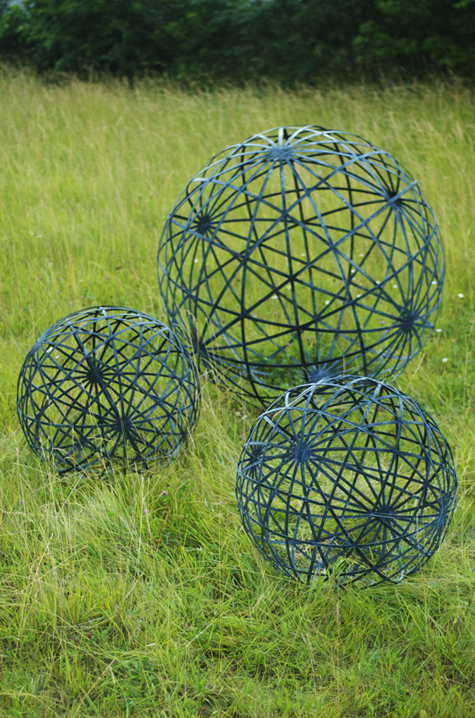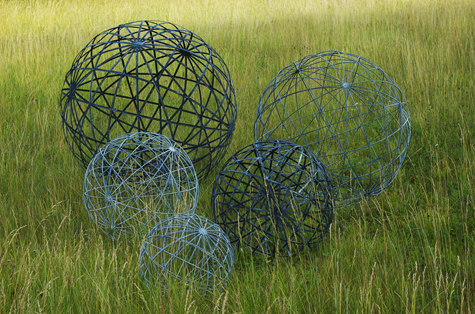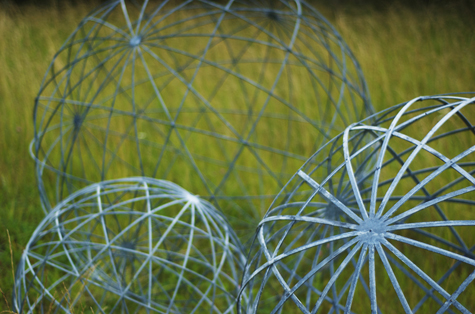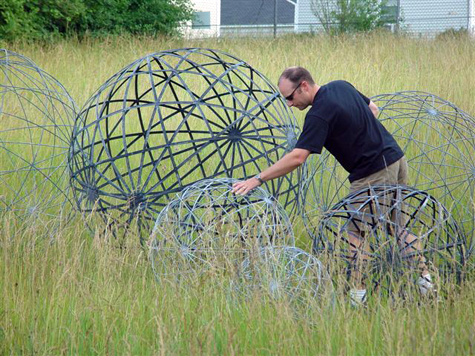
Sculpture in a garden is a big topic, which I am sure will surface again and again in my writings. Defining a sculpture can be very much about the environment in which it is placed. It is my opinion that some sculpture absolutely relies on its environment, in order to earn the the honored designation-sculpture. Some sculpture I see in galleries, or museums, I would never see as sculpture-but for the gallery or museum address. Some landscape sculpture has been documented in photographs- often this sculpture is more about the moment of the photograph, than the sculpture itself. I own every book ever published about the work of Andy Goldsworthy-but many of his sculptures are ephemeral such that they are not really sculpture in a classical sense. The photographs of his works are as much art as the works themselves. But his work makes me rethink my definitions-this is a good thing to come from looking at art. I buy books regularly, and I read a lot. Its exciting to see contemporary garden sculpture-what a departure it is from classical sculpture. As I am willing to be surprised, I try to temper my sense of sculpture with a big dose of what I see, and what I am asked to do. This seems to work.
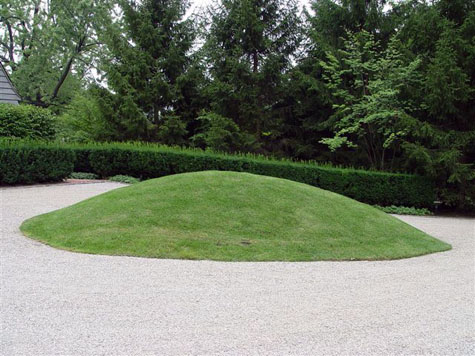
Earth sculptures have a huge history; what gardener does not know something about crop circles? What 20th century landscape designer has not given serious thought to sculptures of earth, covered in some living skin? What landscape designer, since the day that someone thought to design landscapes, doesn’t see when the landscape transcends horticulture and becomes sculpture? What gardener has not been interested in Stonehenge, and every Stonehedge counterpart documented world wide? I am not a first rate scholar on the history of garden sculpture-I am just a somewhat educated landscape designer with a big interest in garden sculpture.
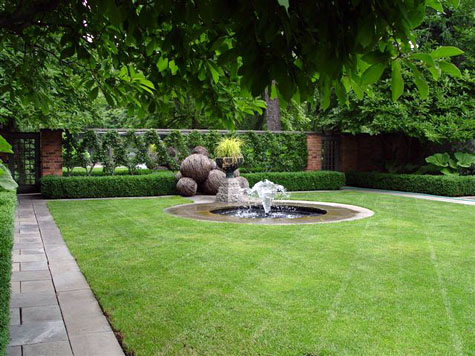
I am strictly a supporting cast, where the sculpture of my clients is concerned. I look at what they buy, and if I am lucky, they will pile things up, move things around-and talk about what moves them.
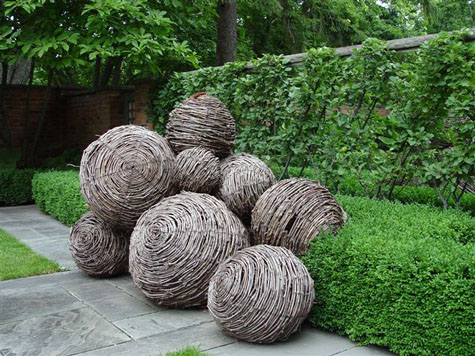
Contrary to the garden sculpture placed in Europe ever since the formal garden got its name, some sculptures are ephemeral, moveable-here today-elsewhere tomorrow. These Belgian hazelwood spheres, piled up into a boxwood hedge-who does not appreciate the gesture?
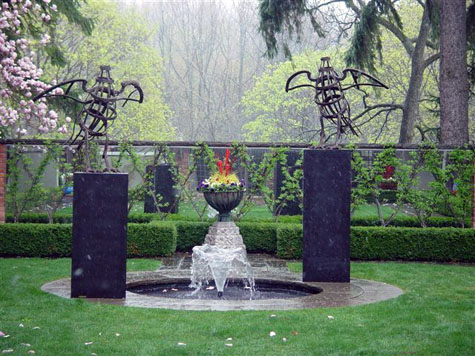
These birds once graced the roof of the Palais Royale in Paris. This would be the better part of two centuries ago. What remains of them is their wrought iron armatures, and their hand-wrought feet. This pair of ancient birds are the most spectacular sculptures I have ever seen. They have such incredible presence, though little remains of their original shape. They are so powerful in their shape and their bearing , though little of their ornament remains. What landscape would do justice to them?
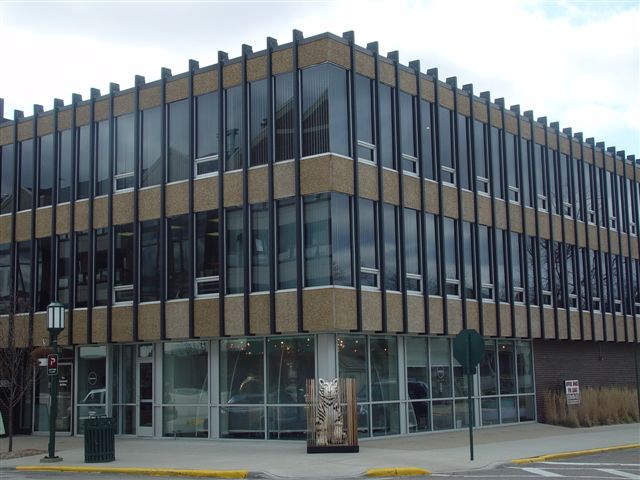
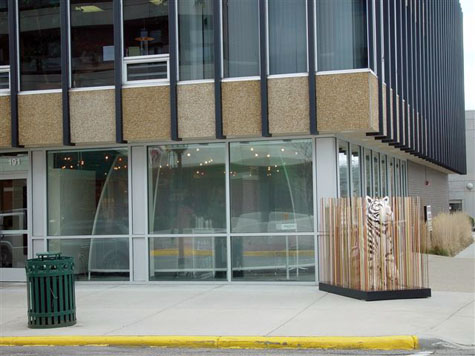
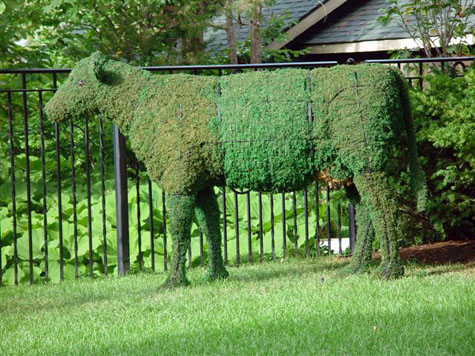
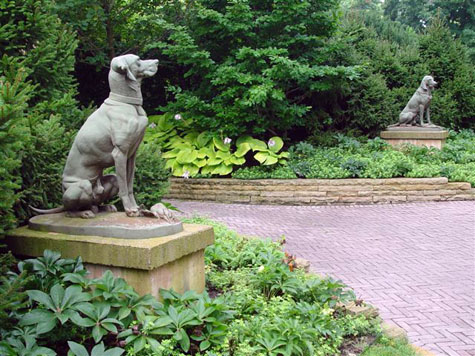


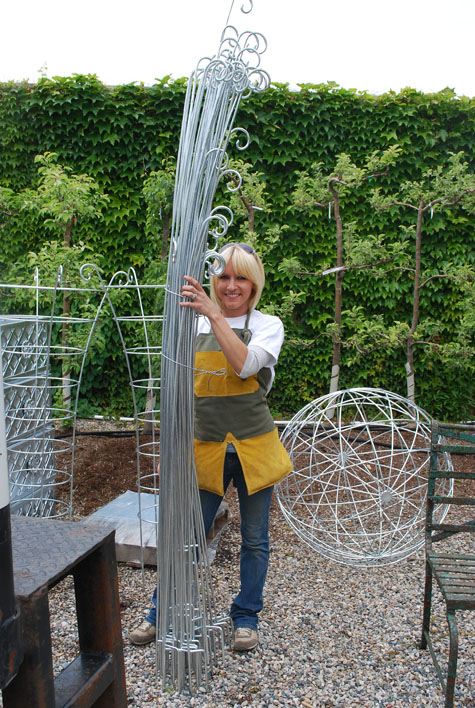
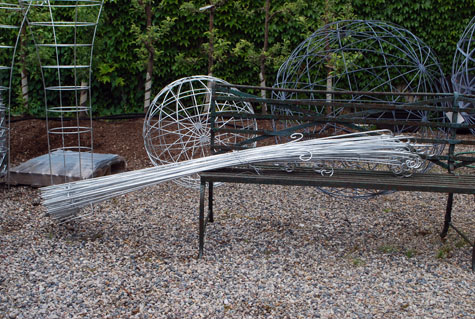 Why do plant stakes come to a point that could poke you, if you aren’t watching what you are doing? Why aren’t the tuteurs beautiful shapes??�
Why do plant stakes come to a point that could poke you, if you aren’t watching what you are doing? Why aren’t the tuteurs beautiful shapes??�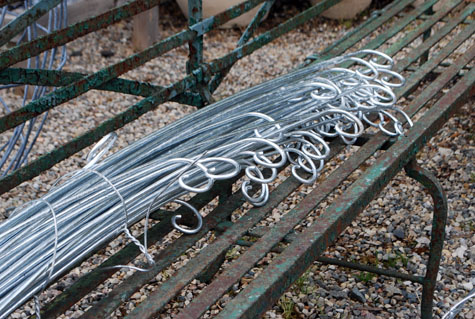
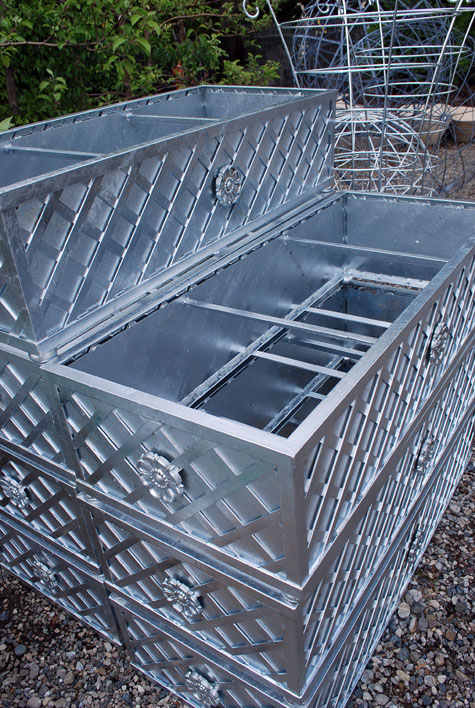
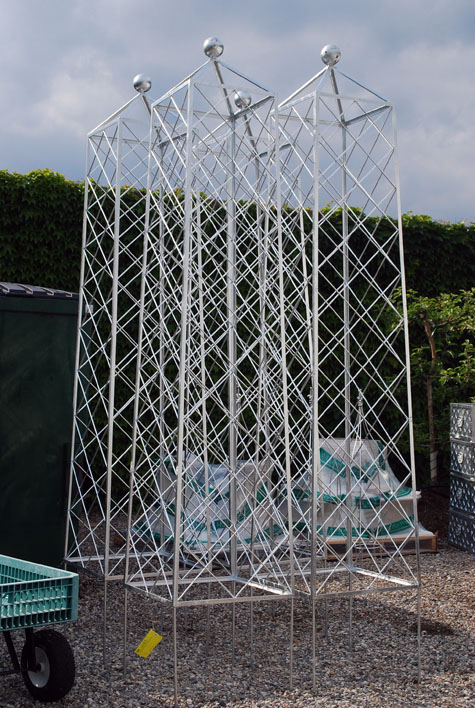
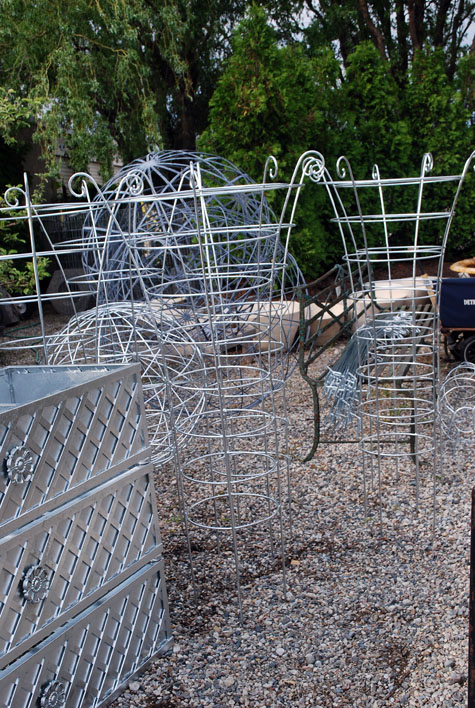

 Though I am fond of almost every geometric shape, I am especially enamored of spheres. Spheres in any material or arrangement.
Though I am fond of almost every geometric shape, I am especially enamored of spheres. Spheres in any material or arrangement.


